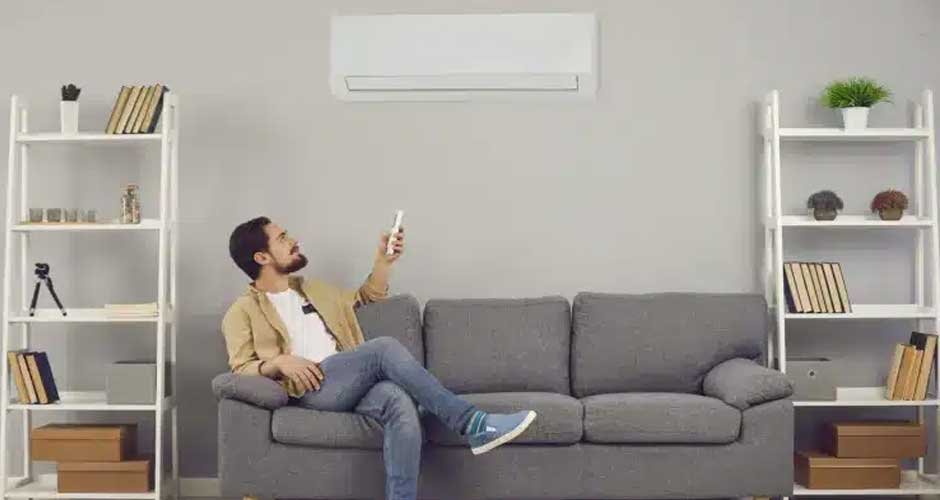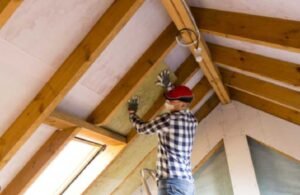In today’s fast-paced world, our homes should be sanctuaries of comfort and health, yet poor airflow often undermines this ideal. Improving airflow not only boosts home comfort but also enhances air quality, energy efficiency, and overall well-being. For homeowners seeking to create a healthier living environment, understanding and optimizing your home’s airflow is crucial. This guide explores practical and effective strategies for improving airflow, ensuring your home remains a haven of comfort.
Contents
- 1 The Importance of Airflow for Healthy Living
- 2 Identifying Common Airflow Issues
- 3 Simple Ventilation Solutions for Instant Impact
- 4 The Role of HVAC Systems in Home Comfort
- 5 Optimizing Airflow with Strategic Furniture Arrangement
- 6 Harnessing the Power of Ceiling Fans
- 7 The Benefits of Adding Plants for Natural Air Purification
- 8 Investing in Air Purifiers for Enhanced Comfort
- 9 The Impact of Insulation on Indoor Air Quality
- 10 Regular Maintenance for Long-Term Airflow Efficiency
- 11 Creating a Holistic Approach to Home Comfort
- 12 Conclusion
The Importance of Airflow for Healthy Living
Airflow plays a vital role in maintaining a healthy indoor environment. Good airflow prevents the buildup of pollutants, allergens, and moisture, all of which can lead to health issues. Inadequate ventilation can cause stale air, leading to discomfort and potential respiratory problems. Thus, prioritizing airflow is essential for protecting your family’s health and enhancing comfort.
Identifying Common Airflow Issues
Understanding the common causes of poor airflow is the first step toward improvement. Blocked vents, dirty filters, and poorly designed HVAC systems are frequent culprits. By identifying these issues, homeowners can address them proactively, paving the way for a more comfortable home environment.
Simple Ventilation Solutions for Instant Impact
One of the easiest ways to improve airflow is ensuring that windows and doors are opened regularly to allow fresh air to circulate. This simple practice can significantly reduce indoor air pollutants. Additionally, using exhaust fans in kitchens and bathrooms can help remove moisture and odors, preventing mold and mildew growth.
The Role of HVAC Systems in Home Comfort
A well-maintained HVAC system is essential for optimal airflow and temperature control. Regular maintenance, such as changing filters and cleaning ducts, can enhance system performance, providing consistent airflow throughout your home. Consider consulting a professional for furnace installation in Sandy to ensure your system is running efficiently.
Optimizing Airflow with Strategic Furniture Arrangement
Furniture placement can significantly impact airflow. By arranging furniture to avoid blocking vents and registers, you can promote better air circulation. This simple adjustment not only improves airflow but also enhances the overall aesthetic of your home, creating a more inviting space.
Harnessing the Power of Ceiling Fans
Ceiling fans are a cost-effective solution for improving airflow and maintaining a comfortable temperature. By strategically placing fans in key areas, you can circulate air efficiently, reducing reliance on HVAC systems. In summer, set ceiling fans to rotate counterclockwise for a cooling effect. In winter, reverse the direction to push warm air down.
The Benefits of Adding Plants for Natural Air Purification
Indoor plants not only enhance aesthetics but also contribute to better air quality. Certain plants can absorb toxins, increasing oxygen levels and reducing dust particles. Incorporating plants like spider plants, peace lilies, and snake plants can improve both airflow and indoor air quality, creating a fresher, more breathable environment.
Investing in Air Purifiers for Enhanced Comfort
For homes prone to allergens or pollutants, air purifiers can be a worthwhile investment. These devices filter out airborne particles, improving air quality and promoting better health. When choosing an air purifier, consider factors such as room size, filter type, and noise level to ensure it meets your needs.
The Impact of Insulation on Indoor Air Quality
Proper insulation helps regulate indoor temperature, reducing the workload on HVAC systems. Well-insulated homes maintain consistent temperatures, enhancing comfort while minimizing energy consumption. By investing in quality insulation, homeowners can enjoy improved airflow and a more comfortable living environment.
Regular Maintenance for Long-Term Airflow Efficiency
Maintaining your home’s systems is vital for long-term airflow efficiency and comfort. Regularly cleaning vents, changing filters, and scheduling professional inspections can prevent airflow issues before they arise. Consistent maintenance ensures your home’s environment remains healthy and comfortable year-round.
Creating a Holistic Approach to Home Comfort
Improving airflow and home comfort requires a holistic approach, incorporating various strategies for optimal results. By addressing airflow issues, optimizing HVAC systems, and considering natural solutions like plants and ceiling fans, homeowners can create a comfortable, healthy living space that promotes well-being and enhances quality of life.
Conclusion
Creating the perfect indoor environment is an achievable goal with the right strategies in place. By understanding and addressing airflow issues, optimizing ventilation, and incorporating both technological and natural solutions, you can transform your home into a sanctuary of comfort and health.
Prioritizing airflow not only improves air quality and energy efficiency but also contributes to the well-being of everyone in your living space. Remember, consistent maintenance and a mindful approach to home design play crucial roles in sustaining long-term comfort. Embrace these practices to ensure your home remains a sanctuary that supports a healthier and more enjoyable lifestyle.








